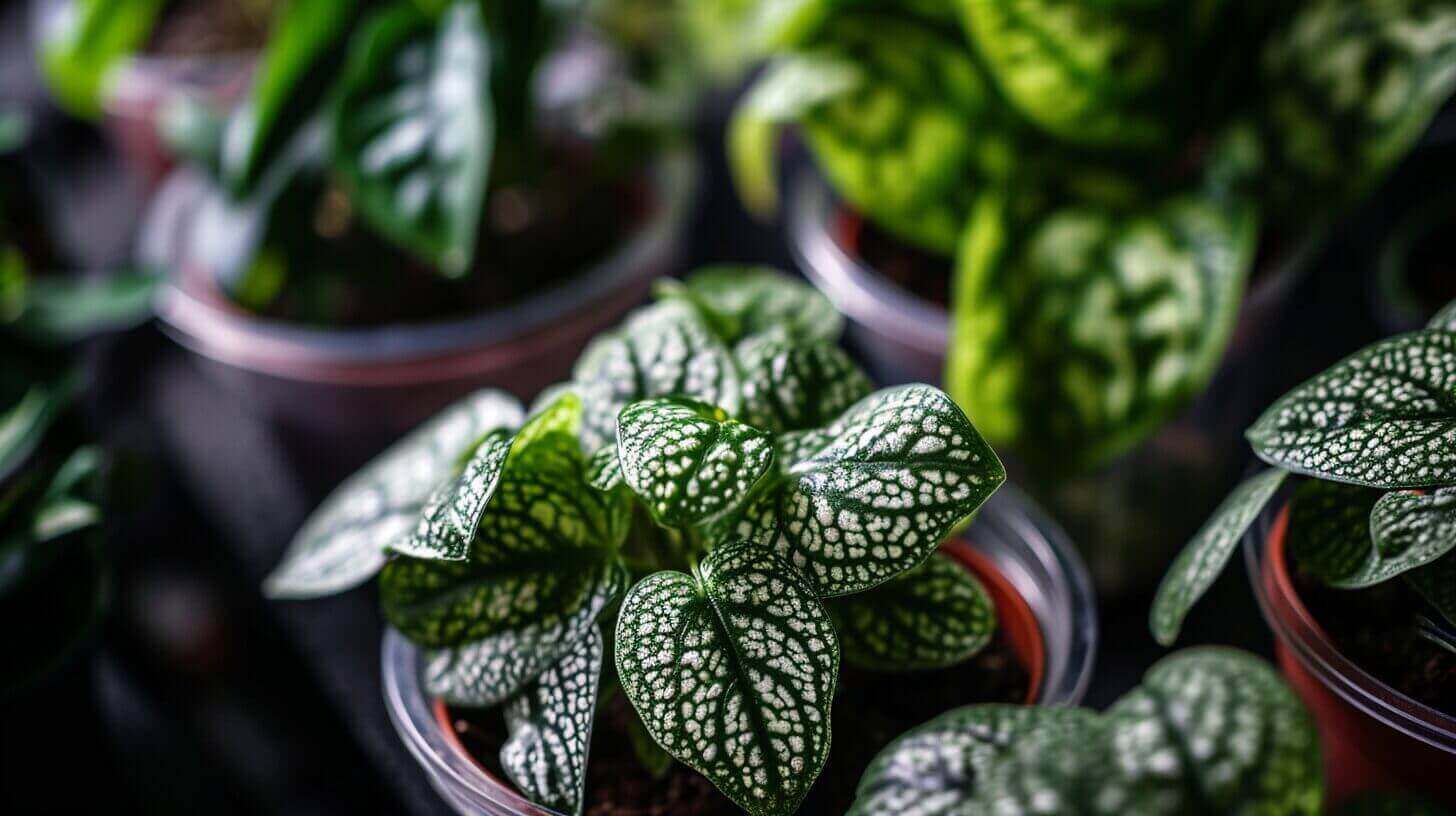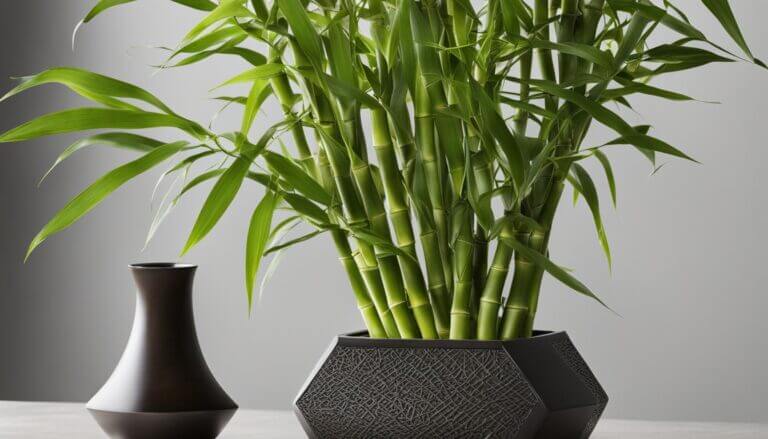Polka Dot Plant Propagation: How to Grow New Plants from Cuttings
Polka dot plants, also known as Hypoestes phyllostachya, are vibrant and easy-to-grow indoor plants that can instantly brighten up any space. If you want to expand your collection of polka dot plants without breaking the bank, propagation is the way to go. There are two main methods of propagating polka dot plants: water propagation and soil propagation. In water propagation, you cut a stem with leaves and nodes, place it in water, and wait for roots to grow. In soil propagation, you take stem cuttings and plant them in well-draining potting mix. With a little patience and care, you can easily grow new polka dot plants from cuttings.
Key Takeaways:
- Polka dot plants, also known as Hypoestes phyllostachya, are vibrant and easy-to-grow indoor plants.
- Propagation is an affordable way to expand your collection of polka dot plants.
- There are two main methods of polka dot plant propagation: water propagation and soil propagation.
- In water propagation, you place stem cuttings in water until roots grow.
- In soil propagation, you plant stem cuttings in well-draining potting mix.
Water Propagation: Growing Polka Dot Plants in Water
If you want to propagate your polka dot plants, water propagation is a simple and effective method to try. This method involves cutting a stem with leaves and nodes and placing it in water until roots develop. Here are the steps to successfully propagate your polka dot plants in water:
- Select a healthy stem with leaves and a few nodes.
- Cut the stem just below the nodes using clean scissors or shears.
- Place the cutting in a container of clean water, ensuring that at least one node is submerged.
- Find a bright spot with indirect light for the cutting, as this will promote root growth.
- Change the water every week to prevent algae buildup and maintain a clean environment for the cutting.
Within a couple of weeks, you should start to see root growth. Once the roots have grown a few inches, you can transfer the cutting to well-draining potting soil and continue to care for it as a mature polka dot plant.
Benefits of Water Propagation
Water propagation offers several benefits for propagating polka dot plants:
- It’s an easy method that requires minimal materials and setup.
- Root growth is easily visible, allowing you to monitor the progress of your cutting.
- It can be a fun learning experience, especially for beginners or children interested in plant propagation.
Now that you know the basics of water propagation, you can confidently start growing new polka dot plants from cuttings using this method.
Soil Propagation: Growing Polka Dot Plants in Soil
Soil propagation is another effective method for propagating polka dot plants. To propagate a polka dot plant in soil, start by taking stem cuttings with healthy leaves and nodes. Cut the stems below the nodes and dip the cut ends into rooting hormone to promote root growth. Fill a small plastic nursery pot with well-draining potting mix and create a small hole using a pencil or stick. Gently place the cuttings into the hole and lightly moisten the soil. Keep the soil moist but not soggy over the next few weeks to allow the cuttings to grow roots. After a couple of weeks, check for root development by gently tugging on the cuttings. If they feel resistance, it means they have successfully rooted in the soil.
Soil propagation offers several advantages for polka dot plant propagation. First, it allows the plants to establish a stronger root system, leading to healthier and more vigorous growth. Additionally, using rooting hormone enhances the chances of successful rooting and increases the speed of root development. By providing the right conditions and care, you can ensure the successful propagation of polka dot plants in soil.
Comparison: Water Propagation vs. Soil Propagation
When deciding between water propagation and soil propagation for polka dot plants, it’s important to consider the pros and cons of each method. Here’s a comparison:
| Water Propagation | Soil Propagation |
|---|---|
| Easy process | Establishes stronger root system |
| Allows for easy monitoring of root growth | Requires the use of rooting hormone |
| Relatively slower root development | Offers faster root development |
| Transplanting to soil may require additional acclimation | No need for acclimation as the plant is already in soil |
Best Time for Polka Dot Plant Propagation
Propagation is a fantastic way to expand your collection of polka dot plants and bring more vibrancy into your indoor space. To ensure successful propagation, it is important to understand the best time to propagate polka dot plants. The ideal time for propagation is during the active growth phase of the plants, which typically occurs in the spring and summer.
During the active growth phase, polka dot plants receive the highest amount of light and warmer temperatures, which create optimal conditions for root growth. These favorable environmental factors increase the success rate of propagation and result in faster growth for the newly propagated plants. While it is possible to propagate polka dot plants at any time of the year, choosing to do so during the spring and summer will greatly enhance your chances of success.
By timing your polka dot plant propagation to align with their active growth phase, you provide them with the best possible conditions for root development and overall plant health. This ensures that your newly propagated plants will have a strong foundation to flourish and thrive in their new environment.
Tips for Successful Polka Dot Plant Propagation
Successfully propagating polka dot plants requires attention to detail and following the right techniques. Here are some tips to help you achieve successful polka dot plant propagation:
- Start with healthy cuttings: Choose stem cuttings that have healthy leaves and nodes. Avoid using cuttings from plants that are wilting or damaged.
- Provide the right conditions: Whether you’re propagating in water or soil, make sure to provide bright, indirect light for the cuttings. This will help stimulate root growth and overall plant health.
- Use clean tools: Before taking cuttings, ensure that your scissors or shears are clean. This helps prevent the spread of diseases and ensures a clean cut for better rooting.
- Change water regularly: If you’re propagating in water, it’s important to change the water regularly to prevent the buildup of algae. Algae can hinder root growth and affect the overall health of the cutting.
- Moisten soil properly: When propagating in soil, keep the soil moist but not soggy. Overwatering can lead to root rot, while underwatering can hinder root development. Find the right balance to promote healthy root growth.
- Use rooting hormone: For soil propagation, consider using rooting hormone on the cut ends of the stem. Rooting hormone helps stimulate root growth and increases the success rate of propagation.
- Monitor root development: After a couple of weeks, gently tug on the cuttings to check for root development. If you feel resistance, it means the cuttings have successfully rooted and can be transplanted.
- Transplant with care: Once the cuttings have rooted, transplant them into larger pots with well-draining soil. This gives the new plants room to grow and ensures proper nutrient uptake.
Tips from experienced gardeners
“When propagating polka dot plants, I always make sure to choose cuttings from healthy, vibrant plants. Providing the right amount of light and moisture is crucial for successful root development. And don’t forget to monitor your cuttings closely during the rooting process!” – Emily, experienced gardener
Comparative Table: Water Propagation vs. Soil Propagation
| Water Propagation | Soil Propagation |
|---|---|
| Easy and requires minimal materials | Requires well-draining potting mix and rooting hormone |
| Roots develop in water before transplanting | Roots develop directly in the soil |
| Requires regular water changes to prevent algae | Requires moist soil to promote root growth |
| Less control over soil conditions | More control over soil conditions |
| Can be visually appealing with roots growing in water | Roots are hidden underground in the soil |
Care Tips for Growing Polka Dot Plants
Proper care is essential for the healthy growth of polka dot plants. By following these care tips, you can ensure that your polka dot plants thrive and continue to brighten up your space.
Provide bright, indirect light
Polka dot plants thrive in bright but indirect light. Place them near a window that receives plenty of indirect sunlight to provide the right amount of light for optimal growth.
Maintain temperature range
Polka dot plants prefer a temperature range of 70 to 80 degrees Fahrenheit (21 to 26 degrees Celsius). Keep them in a room with consistent temperatures within this range to promote healthy growth.
Maintain humidity
Polka dot plants prefer humidity levels of 50% or higher. To maintain the required humidity, consider placing them in a bathroom or using a humidifier near the plants.
Use well-draining potting mix
Choose a well-draining potting mix for your polka dot plants. This will allow water to flow easily through the soil, preventing the roots from becoming waterlogged and avoiding the risk of root rot.
Water appropriately
Keep the soil of your polka dot plants lightly moist at all times. Avoid overwatering, as this can lead to soggy conditions that are detrimental to the plant’s health. Check the moisture levels regularly and adjust your watering schedule accordingly.
Fertilize during the growing season
During the spring and summer, when polka dot plants are in their active growth phase, fertilize them once a month with a diluted general fertilizer. This will provide the necessary nutrients for new growth and vibrant foliage.
FAQ
What is the best method for propagating polka dot plants?
There are two main methods of propagating polka dot plants: water propagation and soil propagation.
How do I propagate polka dot plants in water?
To propagate a polka dot plant in water, cut a stem with leaves and nodes, place it in water, and wait for roots to grow.
How do I propagate polka dot plants in soil?
To propagate a polka dot plant in soil, take stem cuttings, dip the cut ends into rooting hormone, and plant them in well-draining potting mix.
When is the best time to propagate polka dot plants?
The best time to propagate polka dot plants is during their active growth phase, typically in the spring and summer.
What are some tips for successful polka dot plant propagation?
Some tips for successful polka dot plant propagation include using clean scissors or shears, providing bright, indirect light, changing the water regularly in water propagation, using well-draining potting mix and rooting hormone in soil propagation, keeping the soil moist but not soggy, and transplanting rooted cuttings into larger pots.
What care tips should I follow for growing polka dot plants?
Some care tips for growing polka dot plants include providing bright, indirect light, maintaining the ideal temperature range, maintaining humidity levels of 50% or higher, using well-draining potting mix, watering appropriately, fertilizing during the growing season, and keeping the plants away from pets.







